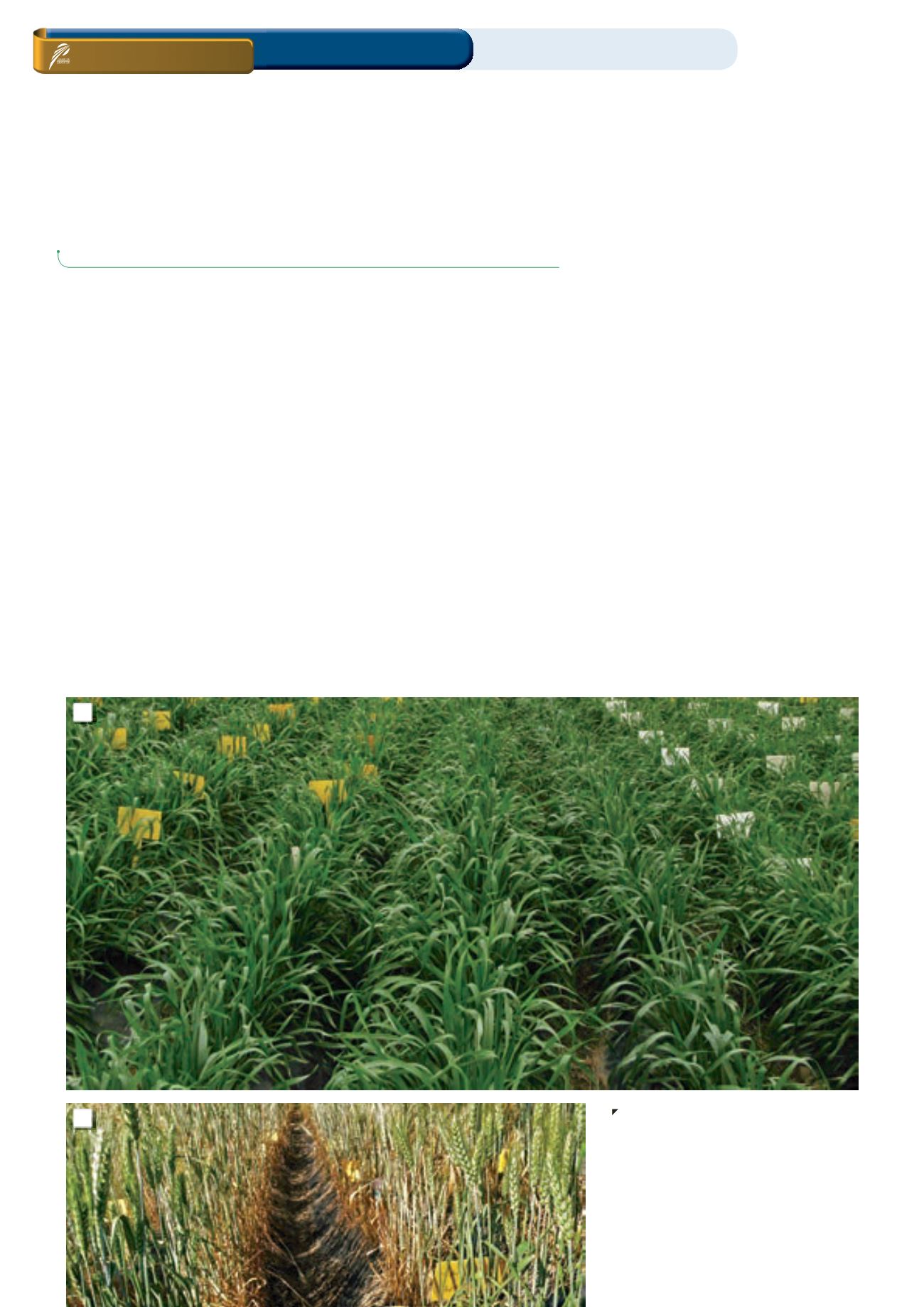

April 2017
54
Screening bread wheat lines
for drought tolerance
W
heat is an important food and cash crop globally. The
crop is sensitive to drought and heat stresses, partic-
ularly during flowering and grain filling stages. Over
the past decade wheat production and productivity
in South Africa and most sub-Saharan African countries declined
due to several production constraints, notably by increased recur-
rent droughts associated with global climate change (Botai
et al
.,
2016; Edossa
et al
., 2014).
South Africa is the leading wheat producer in sub-Saharan Africa.
In the country, a significant area devoted to wheat production is
lost to other alternative crops due to drought stress. The country is
increasingly reliant on wheat imports to sustain local demands for
wheat, which is negatively affecting the wheat industry (DAFF, 2013).
The use of irrigation water for wheat production is expensive, un-
sustainable and unaffordable. Also, the availability of clean water for
irrigation is critical. Other cultural practices such as mulching, fal-
lowing and use of ground cover can be applied to preserve soil
moisture. However, breeding for drought and heat tolerant cultivars
remains the most complementary, sustainable, feasible and eco-
nomic approach to drought management.
This enables development and deployment of new varieties with
high water use efficiency that produce optimum yield under mar-
ginal rainfall conditions to sustainably support wheat growers.
Adaptive characteristics selected from drought tolerant lines can be
introgressed into popular local varieties which are susceptible to
drought stress.
Breeding for drought tolerance requires dedicated research ef-
forts and collaborations among growers: Local, regional and global
governmental and NGO scientists. This allows sharing of genetic
resources, research facilities and advanced technologies (Mwadzin-
geni
et al
., 2016a).
Pre-breeding of wheat for drought
tolerance
The research team of ARC-Small Grain in collaboration with the
University of KwaZulu-Natal has initiated a drought tolerance pre-
breeding programme. The programmes undertake worldwide
collection and systematic characterisation of drought-tolerant
germplasm that will be made available to breeders and other re-
searchers in South Africa.
Under this initiative, a study was carried out to determine the level
of drought tolerance among 88 diverse bread wheat genotypes in-
troduced to South Africa from CIMMYT’s heat and drought nurser-
ies, using eight local checks.
ON FARM LEVEL
Wheat / Breeding / Drought tolerance
Seed
LEARNMORE MWADZINGENI
and
HUSSEIN SHIMELIS,
University of KwaZulu-Natal and
DR TOI J TSILO,
ARC-Small Grain
1 and 2: Screening of drought and heat
stress tolerant bread wheat genotypes at the
Ukulinga research station of the University
of KwaZulu-Natal.
2
1

















